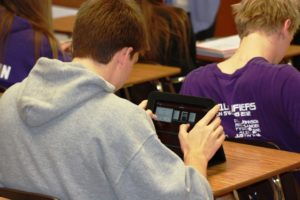Using Technology for the Benefit of Learning
Technology literacy is defined as the ability of individuals to responsibly use appropriate technology tools to:
- access and integrate information; and
- construct and communicate knowledge to improve learning and support lifelong learning.
Since 2010, Johnston has followed the Iowa Core 21st Century Technology Literacy Essential Skills & Concepts (adapted from the International Society for Technology in Education’s National Educational Standards for Students).
21st Century Technology Literacy Essential Concepts & Skills (Iowa Core)
- Demonstrate creative thinking, construct knowledge, and develop innovative products and processes using technology.
- Use digital media and environments to communicate and work collaboratively, including at a distance, to support individual learning and contribute to the learning of others.
- Apply digital tools to gather, evaluate, and use information.
- Demonstrate critical thinking skills using appropriate tools and resources to plan and conduct research, manage projects, solve problems and make informed decisions.
- Understand human, cultural, and societal issues related to technology and practice legal and ethical behavior.
- Demonstrate a sound understanding of technology concepts, systems and operations.
Programming by Grade
- In grades K-5, we detail the skills for each grade level. The K-5 student progress report includes the priority skills for each grade level.
- In grades 6-7 and grade 9, Technology Literacy/Technology courses include activities and projects focused on the essential skills & concepts.
- In grades 6-12, the essential skills & concepts are integrated into content areas.
Evaluation and Moving Forward
All buildings participate in the Clarity Survey (by BrightBytes). Students, teachers and administrators participate in the survey. The Clarity Survey was previously administered in December 2014, March 2016, December 2017 and March 2021, and the data shared with teachers and administrators. The Clarity data suggested items for success indicators are used as buildings prepare Continuous Improvement Plans.